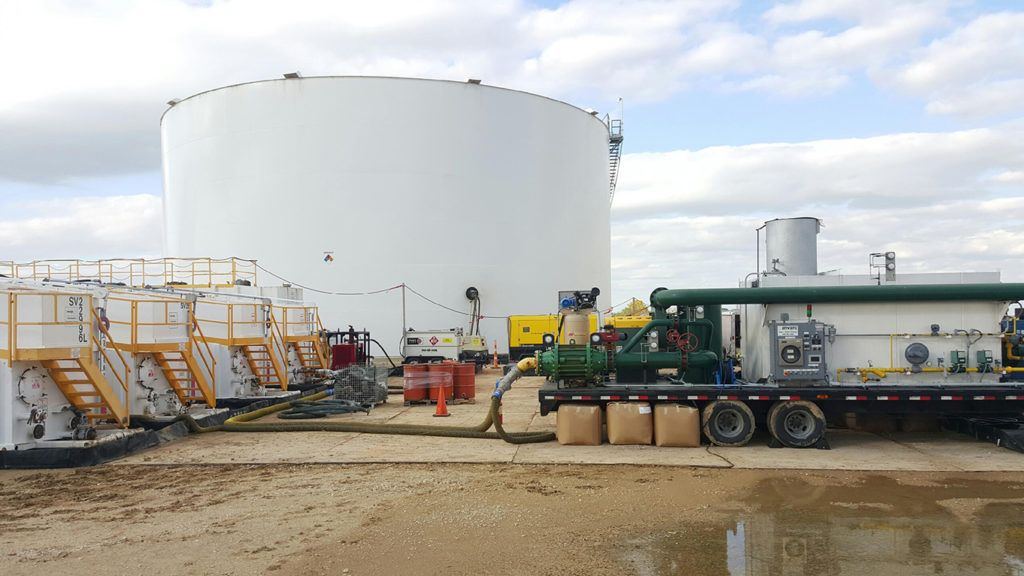
The task of degassing tanks and vessels is a sensitive process that requires knowledgeable specialists and quality equipment. When harmful chemicals are involved, it’s important to be prepared for anything and take the necessary precautions to avoid life-threatening disasters. Here are five tips to uphold safety during this potentially dangerous procedure.
-
Inspect for Leaks
A leak in the tank may be venting hazardous chemicals into the air. Once identified, prompt action is required to preserve the safety of employees and other bystanders in the area.
Leaks must be treated with the utmost urgency. Hydrogen sulfide is a common chemical compound present in natural gas and refinery facilities, and its effects can quickly become life-threatening. Clearing the area of unnecessary personnel and wearing personal protective equipment keeps everyone safe until the air pollution has been controlled.
-
Use a Thermal Oxidizer
During the degassing phase, tank vapors should be routed to a thermal oxidizer for processing. The thermal oxidizer will work to thermally crack and remove any hazardous vapors before being released into the atmosphere. Inside the thermal oxidizer’s firebox both oxygen and heat work together to change the chemical composition of the hydrocarbons in the vapor stream into safer chemical compounds such as H2O and CO2. The degassing process not only ensures that the tank is vented in a safe manner that safeguards the tank’s integrity, but also ensures that the environmental impact is acceptable to the state. Thermal oxidizers have extremely high Destruction and Removal Efficiency (DRE) capacities, these capacities meet or exceed the EPAs or States guidelines for emission requirements.. Without this step, tank emissions may violate EPA regulations and potentially cause harm to those in the community.
Because of the complexity of these pieces of equipment, it is important that thermal oxidizers are well-maintained. Failure to replace or upgrade key components such as detonation/flame arrestors, pressure switches or the lack of maintenance of rotary components may cause the thermal oxidizer system to malfunction in the middle of a job.
-
Prepare for Pyrophoric Material
Storage and venting of chemical compounds high in sulfur may result in the presence of pyrophoric iron sulfides being generated inside of those storage tanks.. This material spontaneously ignites in the presence of air at atmospheric conditions. Pyrophoric concerns are of high risk to the Oil & Gas industry, and for this reason Tank Owners and Contractors alike should assess the risks of pyrophorics very carefully. Where a potential for pyrophorics exist, thorough inspection’s are necessary for a safe and efficient project. Though the process may be prolonged, the property damage and loss of life that may occur in an explosion are far worse than any potential delays in degassing. (Envent has developed tank degassing procedures for pyrophorics tanks that both address the inherit hazards of these types of projects while at the same time ensuring that costs and duration are minimized.)
-
Adhere to EPA Guidelines
The EPA has done meticulous testing to determine what is and isn’t safe when it comes to hazardous materials. By law, guidelines dictated by this agency must be adhered to for everyone’s safety.
For example, the EPA asserts spaces that contain a vapor concentrations that exceed 10% of it’s Lower Explosive Limit are dangerous and must be addressed immediately. Exposure to hydrogen sulfide should remain below 1 ppm for a 8 hour work day, or less than 5ppm for shorter periods of time Monitoring these levels around storage tanks during the degassing process prevents unhealthy exposure and reduces risk of explosion. Thermal oxidizers ensure that tank’s remain at a slight negative to ensure no vapors or hazardous chemicals are vented to the atmosphere or in areas where personnel may be working.
-
Don’t Rush the Timeline
Looming inspections and production deadlines may have some facilities in a rush to get the job completed. Workers should avoid this temptation to rush the process, especially if it involves skipping necessary safety precautions. Though delays may be inevitable, a good team can address any dangers and still complete the process in a timely manner.
Envent is able to perform urgent and emergency degasses without sacrificing quality or safety. Envent’s large and diverse fleet is able to mobilize the correctly sized equipment and properly trained personnel to complete the projects soon and as safely as possible.
It is crucial for workers to always be vigilant of potential risks. Before venting any gases, a thorough walkthrough should be completed, and specialists should prepare a detailed plan of action to approach any ensuing dangers. A good strategy promotes expediency while still upholding safety protocols and procedures. If you have any questions about tank or vessel degassing for your terminal and what services are right for your needs, contact the professionals at Envent Corporation.
